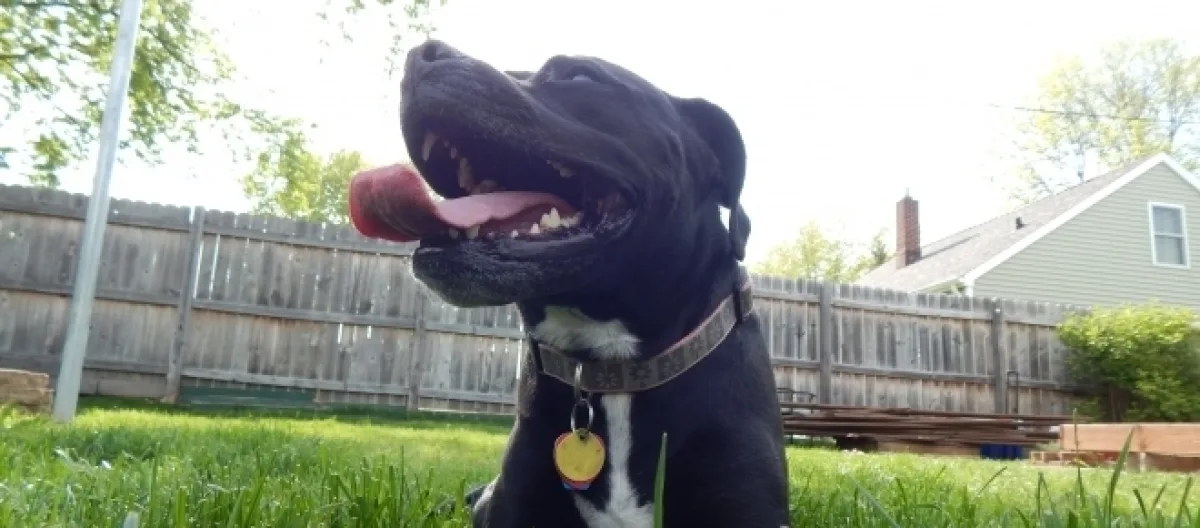Pit bulls are called fighting dogs by the Dogsbite (DBO) disciples who want them eradicated. In response, they are called nanny dogs by anti-BSL (breed-specific legislation) advocates. Is either true? The answer, as it so often is when talking about "pit bulls," is as unfulfilling as ever:
Both. And also, it depends.
The first issue to clear up is that Pit Bull is not the name of an actual breed.
It is a breed grouping that puts at least 3-4 breeds and sometimes up to 30+ breeds into one category called the pit bull. Over the years, the term "pit bull-type dog" has emerged to try to clean things up, but all this does is lend evidence to the idea that all these breeds are basically the same dog with the same history.
Basically, any dog with a blocky head and wide smile is considered a pit bull, DNA be damned. The main breeds that make up the pit bull grouping were bred for various reasons, and yes, some of them for fighting, and most of them do trace their lineage back to similar breeds.
So where does Nanny Dog come from? Same place where Fighting Dog comes from.
Bull and Terrier dog
Pit bulls have been used for a variety of purposes over the past few centuries since breeders started crossing Old English Bulldogs with a variety of terrier mixes, creating the Bull and Terrier breed.
The Bull and Terrier is where most pit bull breeds trace back to, and its purpose was varied. But while they were often used for hunting thanks to a strong nose and incredible athletic ability, they were also used for fighting. This included dog fights, but also included baiting, which is now an illegal practice in most countries as it puts game dogs up against various other animals. Bull and Terriers were bred for bull-baiting and bear-baiting.
The traits that were bred into the Bull and Terrier included high pain tolerance (to withstand injuries from a bear), high intelligence, and incredible loyalty. Breeders of the time wanted a dog that would follow the commands of their master, no questions asked.
Eventually, as baiting and dog fights became illegal in most countries, these dogs and their descendants, which we now call the American Pit Bull Terrier, the Staffordshire Bull Terrier, and the American Staffordshire Terrier, seemed to be without purpose. But, as it turns out, the same selective traits that had been bred into them to make them great in the fighting ring also made them great in the household.
The nanny dog
In the late-19th and early-20th century, pit bull breeds were showcased often as family dogs, and for good reason.
Many traits can be bred into a dog over time, such as intelligence and loyalty, but just like in humans, aggression is recognized as a learned behavior, only applicable to dogs that were bred for the purpose of fighting or baiting.
Oddly enough, the character traits that had been bred into the pit bull breeds to make them better fighters were easily repurposed to make them loving and loyal family pets. Due to their high pain tolerance, and a physique that makes them a natural deterrent to anyone wishing harm on the dog's family (please note, I do not advocate for pit bulls or any breed to be used as a guard dog...most pit bulls are natural protectors out of love for their owners, not hatred for others).
Thus, the nanny dog was born.
In other words, they have been used as fighting dogs and nanny dogs based on the exact same traits that were put to a different use. The only difference between the two is the environment in which they were raised, where fighting dogs expressed their loyalty by winning dog fights, and nanny dogs expressed their loyalty by protecting and nurturing their humans.
Research now shows that pit bull breeds often score very high on temperament tests, and if properly socialized, they can be a welcome addition to many families. While their pure strength and power should never be disregarded, and no dog should be left alone and unsupervised when around children, the evidence continues to build that pit bull breeds of today are no more likely to attack than any other dog, and their intelligence and loyalty can make them a great family pet, a hard-working police dog, and/or an unlikely chick magnet.


